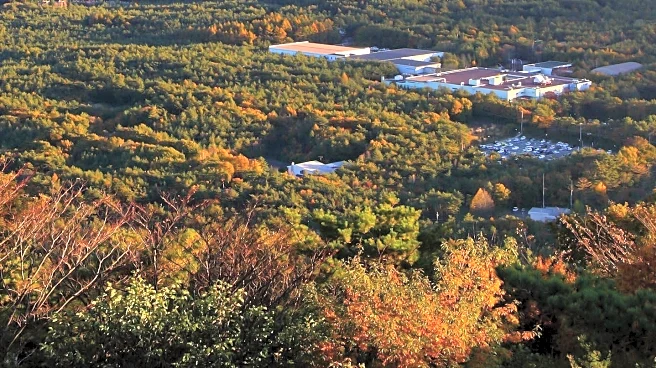What's Happening?
Kokichi Akuzawa, a 102-year-old Japanese man, has become the oldest person to reach the summit of Mount Fuji, Japan's tallest mountain at 3,776 meters. Accompanied by his daughter Motoe, 70, his granddaughter, her husband, and four friends from a climbing club, Akuzawa completed the ascent on August 5, 2025. Despite facing challenges such as heart issues, shingles, and a previous climbing fall, Akuzawa trained rigorously for three months, waking at 5 a.m. for hour-long walks and climbing one mountain each week. His achievement has been recognized by Guinness World Records. Akuzawa, who first climbed Mount Fuji at age 96, expressed gratitude for the support he received from friends and family during the climb.
Why It's Important?
Akuzawa's accomplishment highlights the potential for individuals to achieve remarkable feats regardless of age, inspiring older adults and challenging societal perceptions of aging. His story underscores the importance of community support and perseverance in overcoming physical limitations. This achievement may encourage more elderly individuals to engage in physical activities, promoting health and well-being. Additionally, it brings attention to the growing interest in mountaineering and outdoor activities among diverse age groups, potentially influencing tourism and recreational industries.
What's Next?
While Akuzawa has expressed a desire to continue climbing, he acknowledges that his physical capabilities may limit future ascents. He plans to focus on painting, particularly scenes from Mount Fuji, as a way to preserve memories of his climbs. His family supports this endeavor, encouraging him to capture the beauty of Fuji at sunrise. Akuzawa's story may inspire others to pursue their passions and set personal goals, regardless of age.
Beyond the Headlines
Akuzawa's journey reflects broader themes of resilience and the human spirit's capacity to overcome adversity. His dedication to both mountaineering and painting illustrates the therapeutic benefits of creative and physical pursuits. This narrative may prompt discussions on the role of hobbies and community engagement in enhancing quality of life for seniors, potentially influencing public policy on aging and health.













